What are nodes and internodes of cannabis plants?
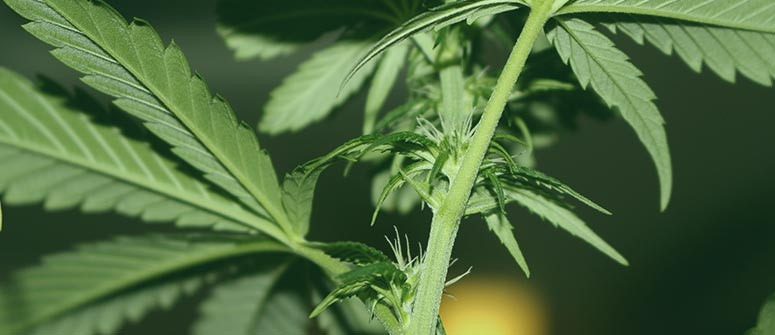
Nodes and internodes provide some telltale signs about a cannabis plant's sex, growth stage, and health. Essential to recognise, but easy to understand, this article will enhance your growing knowledge invaluably.
Contents:
Cannabis plants have a broad anatomy, but, as a grower, some of the most important parts to know about are the nodes and internodes. If you’ve never heard of these, never fear; they’re easy to understand, and the knowledge you’ll gain will prove invaluable when it comes to growing cannabis.
Understanding cannabis plant anatomy
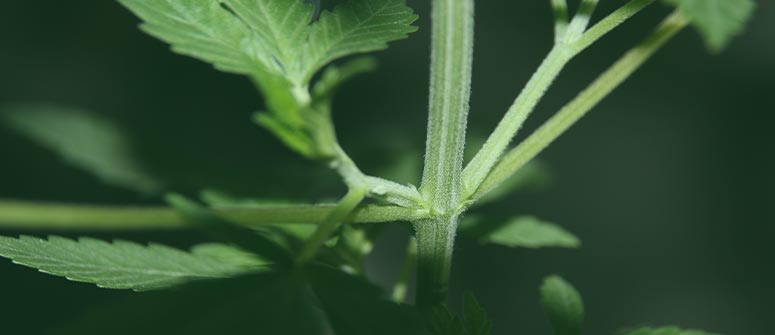
To get the most out of your cannabis growing operation, it’s essential to understand all aspects of the plant's structure. It’s no good just knowing how you want the buds to look come harvest time; you’ve got to know what to look for throughout the grow as well.
Understanding the anatomy of a cannabis plant means you’ll know when they’re progressing as they should, when something is wrong, and how to train them to produce even better results.
The nodes and internodes of cannabis plants are some of the most vital areas when it comes to growing. But what are they? And what can they tell us?
What is a node?
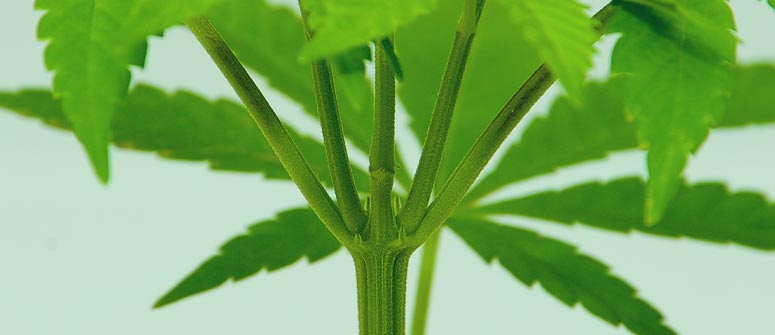
Nodes are the parts of the plant where one branch meets another, or where a branch meets the main stem. It is at these points that a cannabis plant will show you telltale signs of its sex, and help you ascertain when it is moving into the flowering stage. Therefore, it’s very important to know what nodes look like, and to keep an eye on them throughout the growing cycle.
What is an internode?
“Inter” means between, so an “internode” is simply the space between nodes. While internodal spacing can tell us a lot about a cannabis plant, there’s less to look for here compared to the nodes. The space between nodes generally indicates the genetics of a plant, or gives us clues about its environment and how happy it is there. More on this shortly.
How to count cannabis nodes
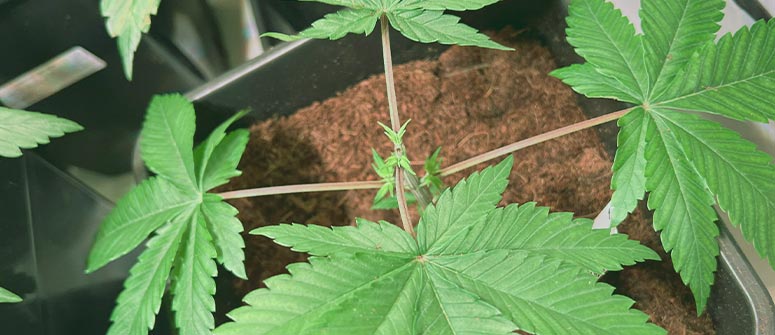
It can be helpful or even necessary to count nodes, especially when employing training practices such as topping. There’s some debate about from where you should begin counting, or whether counting nodes is even important at all.
On the whole, the safest bet is to take the first set of true leaves as the first node. For instance, do not start counting from the cotyledon leaves (the very first leaves that emerge above the soil).
Regarding topping and other forms of training, though, it's most important to understand the strain you are working with, rather than basing your actions purely on the number of nodes. As you will see, different cannabis strains exhibit very different internodal spacing, which will have an influence on timing as well. That said, most growers perform their first topping when plants exhibit 3–5 nodes.
Internodal spacing
These days, many strains of cannabis are indica/sativa hybrids, often exhibiting the shorter and bulkier growing characteristics of indica-leaning plants. However, there is still a lot of variety.
Indicas tend to grow dense and bushy with lots of nodes and tight internodal spacing. This means that they produce a significant amount of bud within a smaller space, making them highly suited to indoor grows. Sativas, on the other hand, tend to stretch much more, with much greater internodal spacing to suit.
Knowing what type of marijuana plant you’re growing, and what characteristics they’re likely to exhibit, is key to properly reading your plants as they grow. For instance, a 100% indica strain that grows tall and spindly with large internodal spacing is likely unhappy about something in its environment. A sativa growing like this, in comparison, might be happy and healthy.
Researching the appropriate internodal spacing for your chosen strains will really help you to gauge their health and progress, so you can give your plants what they need.
The importance of nodes when growing cannabis
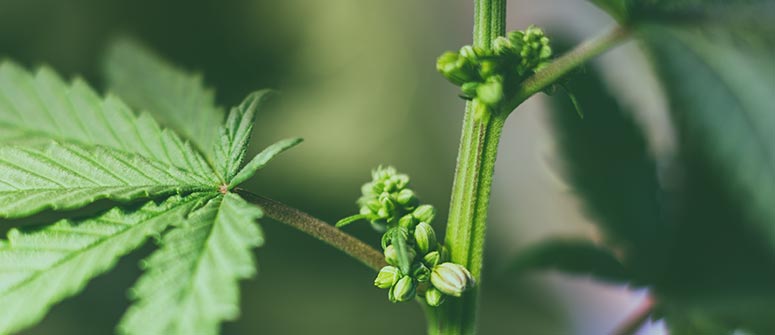
Nodes can tell us a lot. Most importantly, they give us the first indication of what sex our plant will be (a highly important piece of knowledge)! Alongside this, they inform us that the flowering phase has begun.
Sexing cannabis plants
Perhaps the most important thing that a cannabis plant’s nodes can tell us is what sex the plant is. Unless you want to breed, male plants are usually not desirable in a grow space. If allowed to mature, male plants will pollinate the females and cause them to produce seeds, dramatically reducing their yields and essentially spoiling your crop.
With female cannabis plants, white pistils (small hairs) will appear at the nodes. In time, these will develop into (hopefully) large bud sites. Conversely, male plants will develop bulbous lumps at their nodes; these are pollen sacs. Usually, male plants show their sex sooner than female plants.
Although cannabis is predominantly a dioecious plant (featuring distinct male and female sexual organs on distinct plants), keep a careful eye out, as some plants can exhibit both male and female sexual organs, allowing them to effectively pollinate themselves. These hermaphroditic plants are more likely to appear in certain marijuana strains, and are often the result of an imperfect environment.
Stage of development
When you see a female plant amassing pistils at the nodes, you'll know it has entered the flowering stage. It’s at this point that energy gets directed to bud production instead of foliage and stem growth, and you will start to see flowers appear.
Indoors, with photoperiod plants, you’ll know the flowering stage has begun when you decide to trigger it by changing the light schedule to 12/12. Outdoors, or with autoflowering plants, however, keeping an eye on the nodes is important, as it informs you that the plant has progressed into its final (and longest) phase.
Environmental factors
If the environment is imperfect for growing, plants may etiolate, or stretch, developing abnormally spacious internodes. There are two possible reasons for this. First, the lighting is too weak or too far away, so in an attempt to get closer to it, plants do their best to stretch as high as possible. The second issue could be that the nights are too cold and the days are too hot.
If growing indoors, both of these issues should be easy enough to solve. If growing outdoors, it can be more difficult. Cold nights can be combated by bringing plants indoors, but low light levels are more difficult to tackle. Luckily, stretching due to low light is less common outdoors.
As previously mentioned, some plants are predisposed to seemingly excessive stretching, such as certain sativas, whereas other plants will only do so if the environment doesn’t suit them.
Cloning
To clone a cannabis plant, a cutting is taken from the “mother” plant and then replanted to grow into an exact copy. For best results, cut the most mature branches, i.e. the lowest nodes, to make your clones, as these are more likely to develop a strong root system, whereas newer growth may struggle to do so.
Note: Autoflowering strains cannot be effectively cloned, as they have a predetermined life cycle that cannot be extended.
Know your nodes
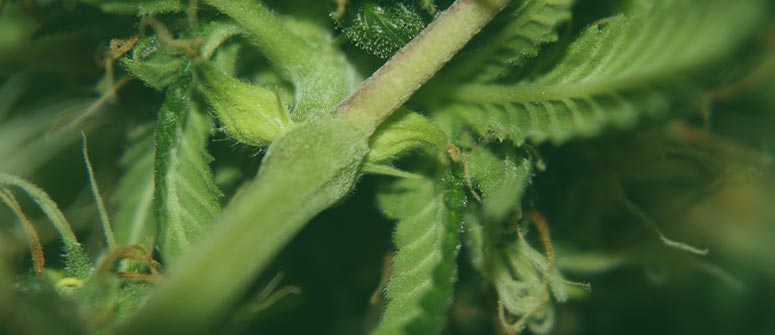
As you can see, nodes and internodes are invaluable to the cannabis plant, and a crucial point of attention for growers. Easy to understand and ingrain, by familiarising yourself with these parts of cannabis plant structure, you’ll be well on your way to becoming a master of your craft.




